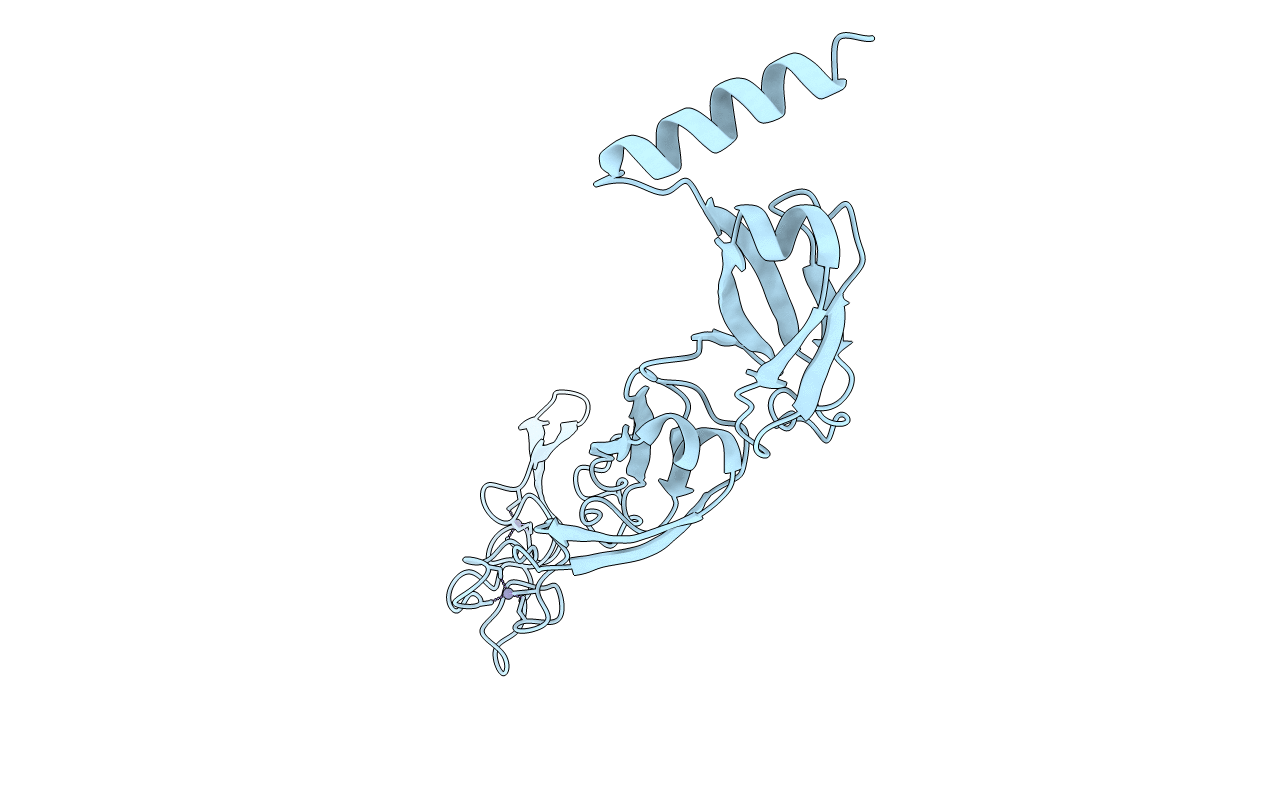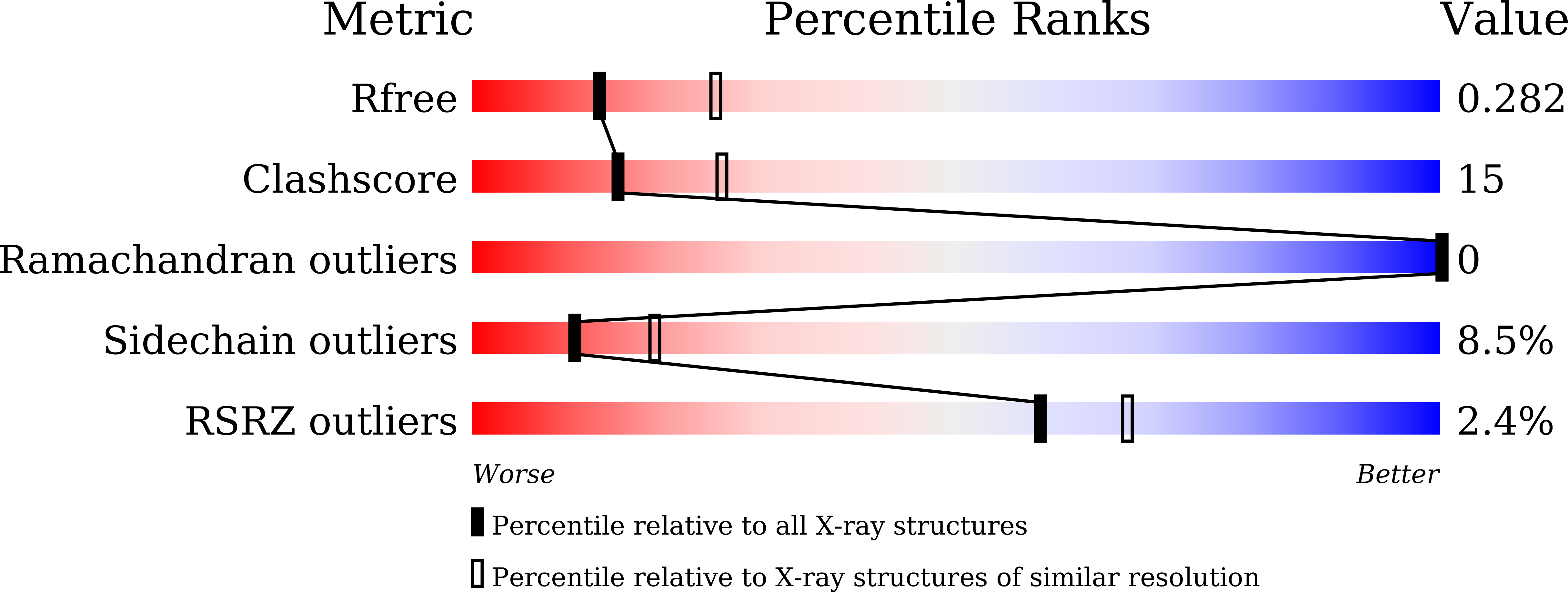
Deposition Date
2019-04-30
Release Date
2020-11-04
Last Version Date
2024-03-27
Entry Detail
PDB ID:
6JZB
Keywords:
Title:
Structural characterization of DnaJ from Streptococcus pneumonia presents a new tetramer of Hsp40 family
Biological Source:
Source Organism:
Streptococcus pneumoniae (Taxon ID: 1313)
Host Organism:
Method Details:
Experimental Method:
Resolution:
2.75 Å
R-Value Free:
0.28
R-Value Work:
0.24
R-Value Observed:
0.25
Space Group:
I 21 21 21


